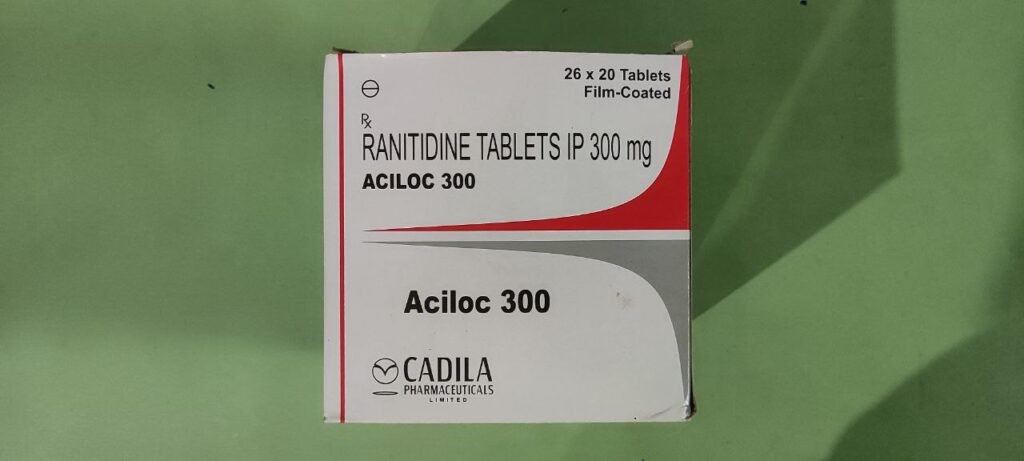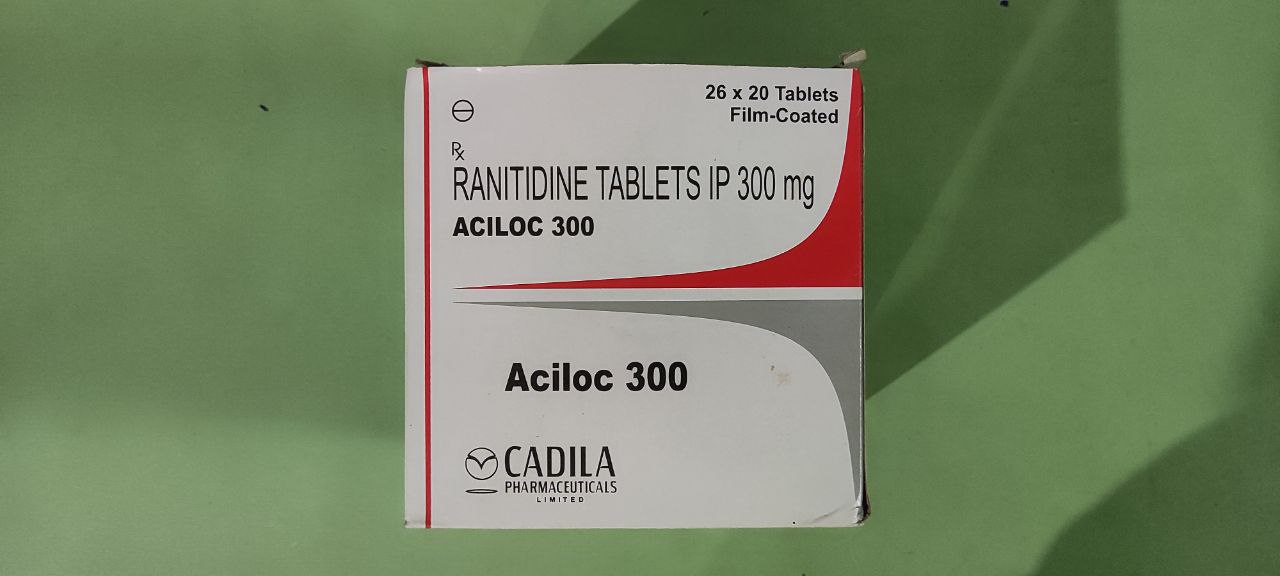Aciloc 300 Composition: Understanding the Ingredients and Effects – Aciloc 300 is a medication commonly prescribed for various gastrointestinal conditions. Understanding its composition is crucial for patients and healthcare professionals alike. Let’s delve into the specifics of Aciloc 300 composition, shedding light on its active and inactive ingredients, dosage, mechanism of action, indications, side effects, and more.
Aciloc 300 Composition: Understanding the Ingredients and Effects

Active Ingredients: Ranitidine Hydrochloride
At the heart of Aciloc 300 lies its active ingredient, Ranitidine Hydrochloride. This compound plays a pivotal role in alleviating symptoms associated with gastric acidity and ulcers. Ranitidine functions by inhibiting the secretion of gastric acid, thereby reducing acidity levels in the stomach. This action helps in the healing of ulcers and provides relief from conditions like heartburn and acid reflux.
Inactive Ingredients
In addition to its active component, Aciloc 300 also contains several inactive ingredients. These include fillers, binders, and coatings that contribute to the medication’s overall stability and appearance. While these inactive ingredients do not exert therapeutic effects, they are crucial for ensuring the proper formulation and delivery of the medication.
Dosage and Administration
The recommended dosage of Aciloc 300 may vary depending on the specific condition being treated and the individual patient’s response to the medication. Typically, it is administered orally, either with or without food. It’s essential to follow the instructions provided by the healthcare provider regarding dosage frequency and duration of treatment to achieve optimal results.
Mechanism of Action
Aciloc 300 exerts its therapeutic effects by selectively inhibiting the action of histamine on the H2 receptors of the gastric parietal cells. This inhibition leads to a reduction in the volume of gastric acid secretion as well as the concentration of hydrogen ions in the gastric juice. By decreasing gastric acidity, Aciloc 300 helps in the prevention and healing of ulcers and provides relief from symptoms such as heartburn and indigestion.
Indications
Aciloc 300 is indicated for the treatment of various gastrointestinal conditions, including duodenal ulcers, gastric ulcers, gastroesophageal reflux disease (GERD), and Zollinger-Ellison syndrome. It is also used for the prevention of ulcers associated with nonsteroidal anti-inflammatory drugs (NSAIDs) and stress ulcer prophylaxis in critically ill patients.
Contraindications
Despite its efficacy, Aciloc 300 is contraindicated in certain situations. Patients with a known hypersensitivity to ranitidine or any other component of the formulation should avoid its use. Additionally, individuals with severe liver dysfunction should exercise caution or avoid Aciloc 300 altogether due to the risk of accumulation.
Side Effects
Common side effects of Aciloc 300 may include headache, dizziness, diarrhea, and constipation. In some cases, more severe adverse reactions such as allergic reactions, liver dysfunction, and blood disorders may occur. It’s essential to report any unusual symptoms experienced while taking Aciloc 300 to a healthcare professional promptly.
Interactions
Aciloc 300 may interact with other medications, potentially altering their efficacy or increasing the risk of adverse effects. It’s crucial to inform the healthcare provider about all medications, supplements, and herbal remedies being taken concurrently to avoid potential drug interactions. Some common interactions include reduced absorption of certain drugs due to altered gastric pH and increased plasma concentrations of others.
Warnings and Precautions
Before using Aciloc 300, patients should be aware of certain warnings and precautions. Long-term use of the medication may increase the risk of developing vitamin B12 deficiency and hypomagnesemia. Patients with a history of acute porphyria should use Aciloc 300 with caution due to the potential risk of exacerbating the condition.
Pregnancy and Lactation
Safety data regarding the use of Aciloc 300 during pregnancy and lactation is limited. While animal studies have not demonstrated teratogenic effects, the potential risks to the fetus or nursing infant remain unclear. Pregnant or breastfeeding women should consult their healthcare provider before initiating treatment with Aciloc 300.
Storage and Handling
Aciloc 300 should be stored at room temperature away from moisture and heat. It’s essential to keep the medication out of reach of children and pets to prevent accidental ingestion. Proper handling and storage help maintain the integrity and efficacy of the product throughout its shelf life.
Availability and Pricing
Aciloc 300 is widely available in pharmacies and healthcare facilities across various regions. The pricing of the medication may vary depending on factors such as location, dosage strength, and formulation. Patients are advised to check with their healthcare provider or pharmacist for information on availability and pricing.
Comparison with Similar Medications
In comparison with other medications used for the treatment of gastric acidity and ulcers, Aciloc 300 offers similar efficacy with a favorable safety profile. However, individual patient factors and preferences may influence the choice of therapy. It’s essential to consult a healthcare professional to determine the most suitable treatment option based on the specific needs and circumstances of the patient.
Conclusion
In conclusion, understanding the composition of Aciloc 300 is essential for maximizing its therapeutic benefits while minimizing the risk of adverse effects. By elucidating the active and inactive ingredients, dosage and administration guidelines, mechanism of action, indications, contraindications, side effects, and other pertinent information, patients and healthcare professionals can make informed decisions regarding its use.
FAQs
- Is Aciloc 300 safe for long-term use?
- While Aciloc 300 is generally considered safe for short-term use, long-term use may be associated with certain risks, including vitamin B12 deficiency and hypomagnesemia. It’s essential to consult a healthcare provider for personalized guidance.
- Can Aciloc 300 be taken with other medications?
- Aciloc 300 may interact with other medications, potentially altering their efficacy or increasing the risk of adverse effects. Patients should inform their healthcare provider about all medications being taken concurrently.
- Are there any dietary restrictions while taking Aciloc 300?
- There are typically no specific dietary restrictions associated with Aciloc 300. However, patients should follow a balanced diet and avoid excessive consumption of foods and beverages that may exacerbate gastrointestinal symptoms.
- What should I do if I miss a dose of Aciloc 300?
- If a dose of Aciloc 300 is missed, it should be taken as soon as remembered. However, if it is almost time for the next scheduled dose, the missed dose should be skipped, and the regular dosing schedule resumed. Doubling up on doses should be avoided.
- Can Aciloc 300 be used during pregnancy?
- The safety of Aciloc 300 during pregnancy is uncertain, and its use should be carefully considered in consultation with a healthcare provider. Pregnant women should discuss the potential risks and benefits of treatment before initiating therapy.




